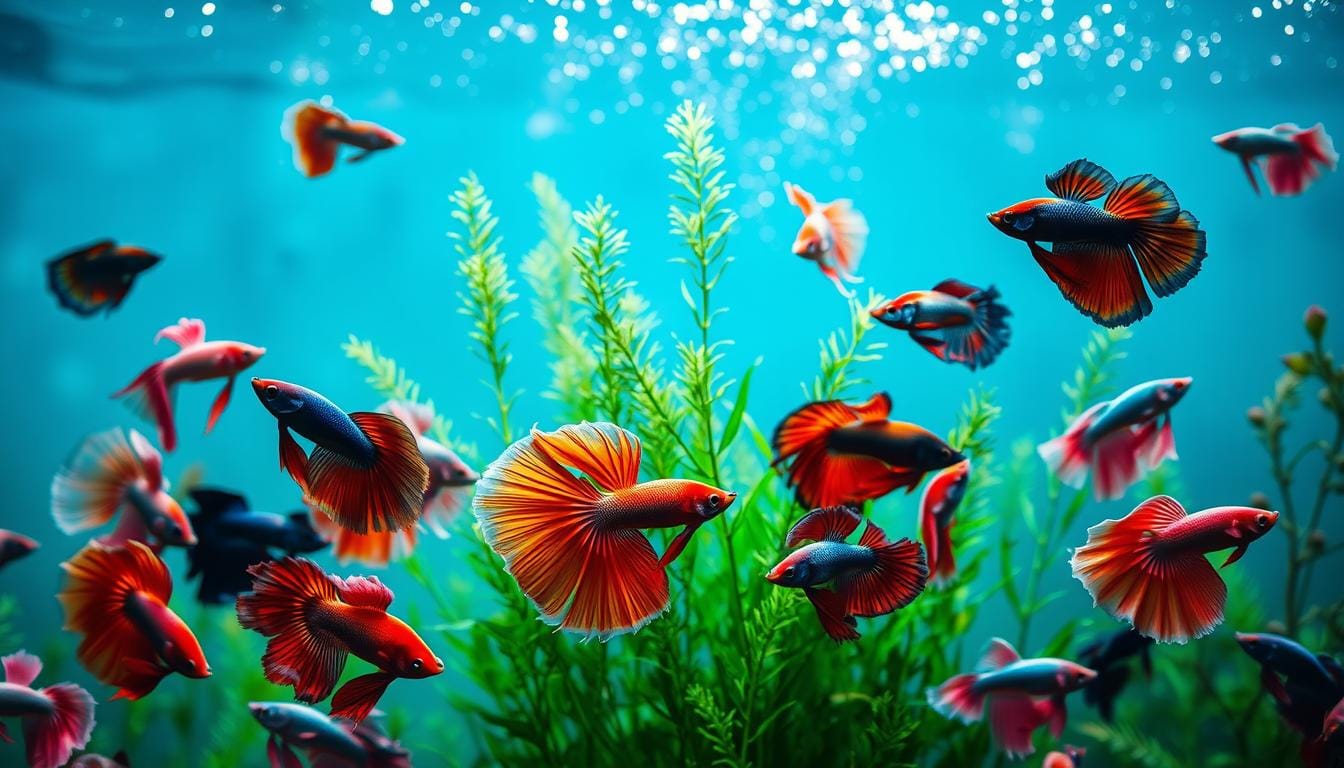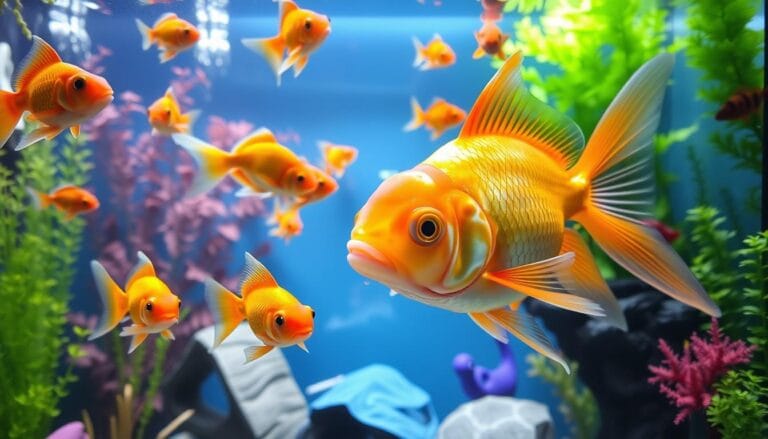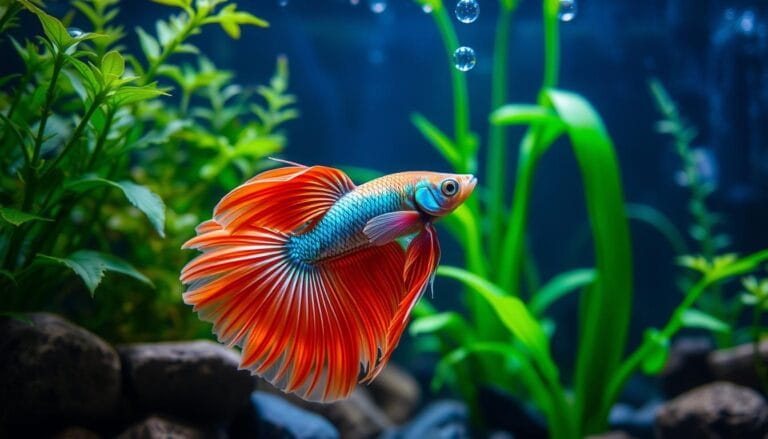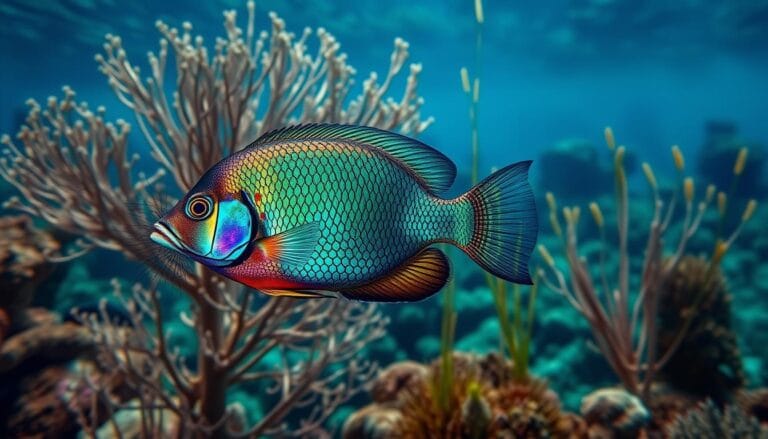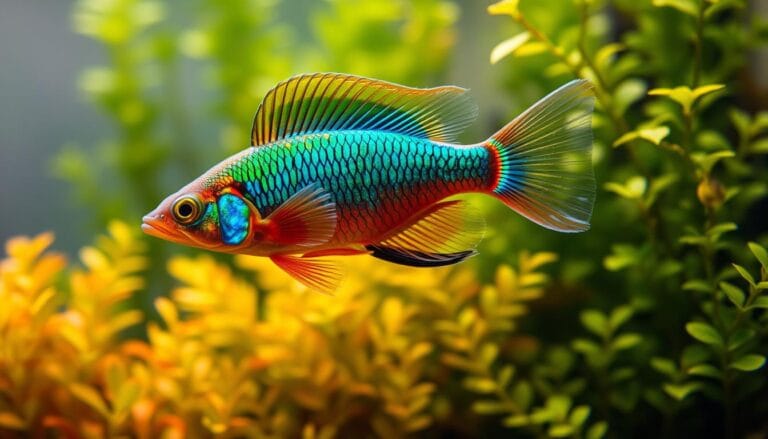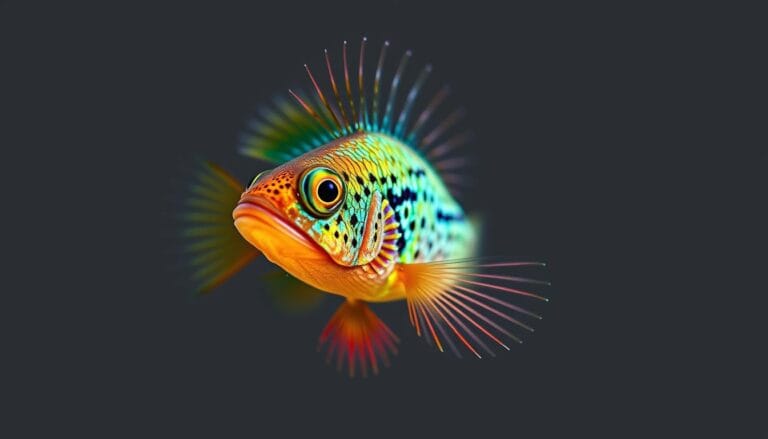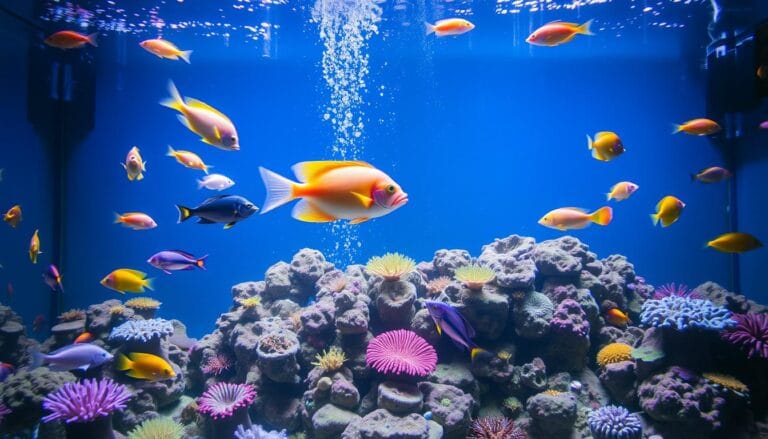Betta Types: How to Identify Every Betta Variety
When you start exploring betta fish, you’ll find many types, each unique. The International Betta Congress (IBC) has set standards for their looks. This makes it easier to know and love the different betta fish varieties. Betta fish fighting is a favorite hobby, with fans worldwide enjoying their beauty and variety.
Table of Contents
Knowing about betta types is key, whether you’re new or experienced. You’ll see everything from the majestic halfmoon betta to the stunning crowntail betta. As you learn more, you’ll become a betta expert and enjoy their beauty.
Key Takeaways
- There are many varieties of betta fish, each with unique characteristics.
- The International Betta Congress (IBC) has set standards for fin shape, tail type, color groups, and patterns.
- Betta fish fighting is a popular hobby, with enthusiasts around the world admiring the beauty and diversity of these creatures.
- Understanding the different betta types is essential for any aquarist or betta enthusiast.
- Each type of betta fish has its own distinct features and characteristics, making them unique and fascinating creatures.
- Learning about the different types of betta fish and their characteristics can help you become a betta expert and appreciate the beauty of these incredible creatures.
- Betta fish are known for their stunning colors and patterns, including red, orange, yellow, green, turquoise, blue, steel, black, and white.
Understanding the World of Betta Fish
Exploring the world of types of betta fish reveals a fascinating history. They were first bred for fighting in the 19th century. Now, they are beloved pets because of their unique traits and easy care. With over 73 species in the Betta genus, betta fish names are common among aquarium lovers.
Betta fish come from Southeast Asia. They are known for their striking looks, personalities, and behaviors. They can even recognize their owners and follow them. Their special labyrinth organ lets them breathe air, making them great for low-oxygen environments.
The History of Betta Fish
The history of betta fish is intriguing. The first breeding dates back to the 19th century. They were bred for fighting but soon became popular pets in the West. Their unique traits and easy care made them a hit.
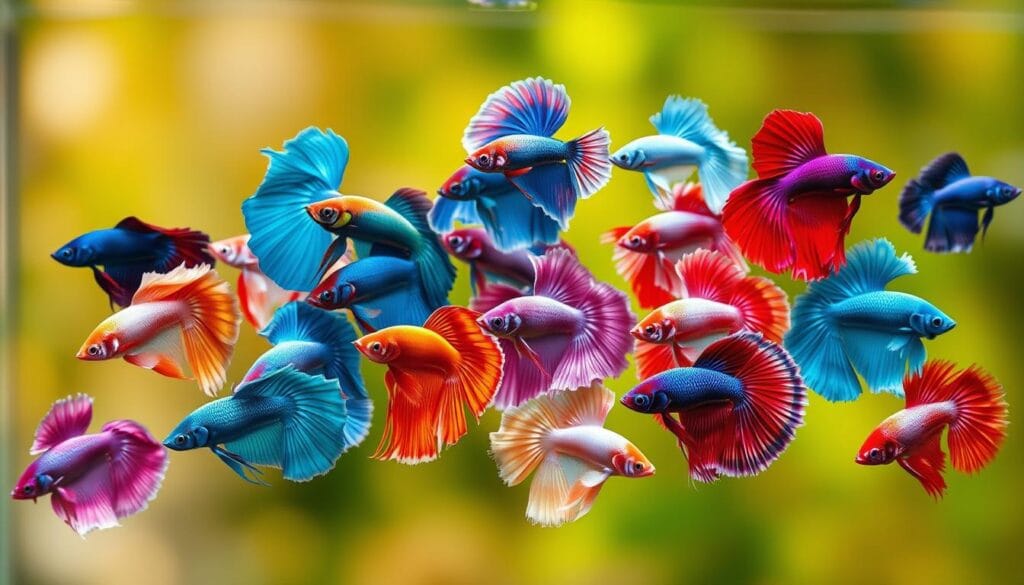
Natural Habitat and Behavior
In their natural home, betta fish live in slow-moving waters of Southeast Asia. They eat insects and insect larvae. In captivity, they need a diet rich in protein, which can be met with commercial foods.
Why Bettas Make Popular Pets
So, why are betta fish such great pets? Their unique personalities and striking looks are a joy to watch. They are easy to care for and can thrive in small spaces. Whether you’re new to aquariums or experienced, betta fish will captivate you with their betta fish names and types of betta fish.
Common Betta Types and Their Characteristics
There are many betta types to pick from, each with its own special traits. You might like the halfmoon betta, which can spread its tail up to 180 degrees. Or maybe the crowntail betta, with its unique crown-like tail. The plakat betta is also popular, known for its short, rounded tail.
Betta fish are known for their aggressive behavior, but they make great pets. Many people enjoy watching different betta types interact. Some even participate in betta fish fighting competitions. The International Betta Congress (IBC) hosts betta fish shows worldwide, showing off their beauty and diversity.
Some of the most common betta types include:
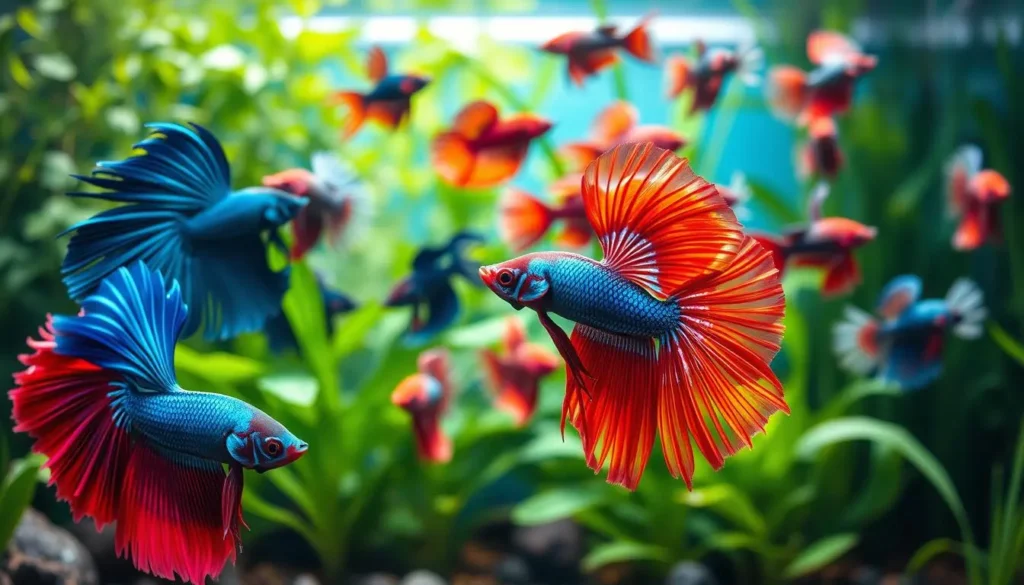
Other favorites include the veiltail and the doubletail. The veiltail betta is often found in pet stores, known for its long, flowing tail. The doubletail betta has two distinct tails from its body. Whether you’re into betta fish fighting or just want to learn more, there’s a betta type for you.
With so many betta types to choose from, it’s easy to see why they’re popular. Knowing the traits of each b BUt type helps you pick the right one. These fish are fascinating, making them a favorite among aquarium lovers.
Tail Types: The Most Distinctive Feature
When it comes to types of betta fish, the tail type stands out. You’ll find many, like the halfmoon, veiltail, crowntail, and double tail. Each has its own look and helps identify the different fighter fish varieties.
The halfmoon betta’s tail spreads to 180 degrees, making it a favorite. The veiltail betta’s tail is long and flowing. The crowntail betta’s tail is unique, with less webbing for a spiky look.
Other notable tails include:
- Double tail: has two separate tails connected to the body
- Round tail: has rounded edges and is often a single tail
- Delta tail: has a solid genotype and can produce super delta and halfmoon offspring
Knowing about different tail types helps you spot the various types of betta fish and fighter fish varieties. Whether you’re new or experienced, learning about these tails is fun and rewarding.
Color Patterns and Variations
Betta fish names are often linked to their amazing color patterns and variations. These fish come in many colors, like solid, bi-color, and multi-color. The color pattern helps identify different betta fish types. You can find them in colors like red, orange, yellow, green, turquoise, blue, steel, black, and white.
Some betta fish have special color patterns, like the marble pattern, which changes as they grow. Others, like the dalmatian betta, have a solid body with spots on fins and tail. Multicolor bettas have three or more colors in a beautiful arrangement.
The size of betta fish can vary, and how big can bet NavParams get depends on their type and living conditions. But their color pattern is key to their identity. Here are some popular color patterns and variations in betta fish:
- Solid color
- Bi-color
- Multi-color
- Marble
- Dalmatian
- Butterfly
- Orchid
With so many color patterns and variations, you’re bound to find a betta fish that matches your taste. Whether you want a betta with a unique color or a specific size, knowing the different types can help you choose.
Size and Growth Patterns of Fighter Fish
When thinking about how big can betta fish get, remember that size varies. It depends on diet, water quality, and genetics. On average, betta fish can grow up to 3 inches long. But, some may reach 3 inches in length under the best conditions.
As a betta fish owner, you might wonder about their growth stages. Betta fish usually reach their full size between 6 to 9 months. Nutrition, tank size, and water quality greatly affect their growth. For example, a betta fish fighting in a small tank with bad water quality may not grow as big.
- Diet: A balanced diet with nutrient-rich foods helps in healthy growth.
- Water quality: Keeping water clean with regular changes and good filtration is key.
- Genetics: Some betta fish breeds are naturally bigger. Knowing your fish’s needs is important.
Understanding what affects betta fish size helps you care for them better. Whether you’re curious about how big can betta fish get or betta fish fighting, focus on their health and happiness.
Rare and Exotic Betta Types
There are many rare and exotic betta fish types out there. These fighter fish varieties are loved by betta fans for their special looks and traits.
Some rare betta types include the giant betta, dragon scale betta, and koi betta. They stand out with their big size, shiny scales, and bright colors.
Here are a few examples of rare and exotic betta types:
- Giant betta: exceeds 2.5 inches in body length
- Dragon scale betta: features thick, metallic scales
- Koi betta: displays a mix of colors, including red, blue, and black
These rare betta types are not just beautiful. They are also highly valued by collectors and fans. If you’re interested in unique fish or want to learn about different types of betta fish and fighter fish varieties, these creatures are truly captivating.
How to Choose the Right Betta Type for Your Setup
Choosing the right betta type can be tough with so many options. Think about tank size, water quality, and what you like. For small tanks, a plakat betta or veiltail betta is a good pick. They’re small and calm.
Remember, male bettas are usually aggressive and should be alone. For a peaceful tank, pair your betta with calm fish like Corydoras catfish. But stay away from aggressive fish that can hurt your betta’s fins.
Here are some key factors to consider when choosing a betta type:
- Tank size: Bettas prefer tanks with a minimum capacity of 5 gallons.
- Water quality: Regular water changes and a balanced pH level are key for your betta’s health.
- Personal preference: Think about the color, fin type, and temperament you like.
By thinking about these factors and picking the right betta type, you can make a happy home for your fish. Make sure to learn about your betta’s needs for a healthy and happy pet.
Care Requirements for Different Betta Varieties
Exploring the world of types of betta fish reveals each variety has its own care needs. To keep your fighter fish varieties happy, consider tank size, water quality, and what to feed them.
A 1-gallon tank is a good start for one betta fish. But, a 10-gallon tank is better for a group with male bettas. Female bettas need a 15-gallon tank to live together safely. Keeping the water temperature between 72–82 F and pH between 6.8–7.5 is also key.
Feeding your betta fish right is important. Feed them once a day, just enough for them to eat in 2 minutes. A mix of pellets, flakes, and live or frozen foods keeps them healthy.
Tank Size Requirements
- Minimum 1 gallon for a single betta fish
- Minimum 10 gallons for a community aquarium with male bettas
- Minimum 15 gallons for a community aquarium with female bettas
Water Parameters
- Temperature range: 72–82 F
- pH range: 6.8–7.5
Feeding Guidelines
- Feed once a day
- Provide only what can be consumed within 2 minutes
- Offer a balanced diet with a variety of foods
By following these guidelines, you’ll create a great home for your types of betta fish and fighter fish varieties. Always research the specific needs of your betta fish to give them the best care.
Common Health Issues by Betta Type
Exploring betta fish names is exciting, but knowing about health issues is key. Understanding how big can betta fish get helps keep them healthy. Betta fish are generally tough, but they can get sick with fin rot, swim bladder disease, and fungal infections.
Signs of sick betta fish include:
- Changes in color or damaged fins
- Loss of appetite or lethargy
- Labored breathing or erratic swimming patterns
- Visible signs of infection, such as pus or swelling
Watching your betta fish closely is vital. Quick action is needed if you see any symptoms. Regular water changes, a balanced diet, and a clean tank can prevent many health problems.
Research shows over 30% of betta owners worry about fin rot, swim bladder disease, and infections. Knowing your betta’s needs and preventing these issues can keep them healthy. Quarantine your betta for 7-14 days if they’re sick. Epsom salt baths can also help with some illnesses.
Being aware of betta fish health issues and taking steps to prevent them is important. Whether you’re new or experienced, staying updated on caring for betta fish is essential. This way, you can enjoy a happy and healthy relationship with your pet.
Conclusion: Embracing the Beauty of Betta Fish Diversity
Betta fish are truly diverse and amazing. They range from majestic halfmoon bettas to stunning crowntail varieties. Whether you’re new to betta fish or an experienced owner, there’s a perfect betta for you.
The beauty of betta fish lies in their fighting patterns and colors. Their vibrant hues and flowing fins win the hearts of many. With the right care, you can enjoy their unique personalities for years.
Let your love for betta fish lead you on a journey of discovery. With the right knowledge and care, you’ll create a wonderful home for your betta. This will bring joy to both you and your fish.
FAQ
What are the different types of betta fish?
Betta fish come in many types. These include halfmoon, veiltail, crowntail, and double tail. Each type has its own look and traits.
What are the key features that distinguish different betta types?
The tail type is a key feature of betta fish. You can find halfmoon, veiltail, crowntail, and double tail varieties. They also come in many colors and patterns, like vibrant reds and striking whites.
How big can betta fish get?
Betta fish vary in size. You can find small plakat betta and large halfmoon betta. Their size depends on the type, growth stage, and other factors.
What are some rare and exotic betta types?
Rare betta types include the giant betta, dragon scale betta, and koi betta. These are sought after for their unique looks and traits.
How do I choose the right betta type for my setup?
Choose a betta fish based on tank size, water quality, and what you like. Different betta varieties have different care needs. Make sure to research the specific needs of the type you want.
What are the common health issues that affect betta fish?
Betta fish can face health issues like fin rot, swim bladder disease, and fungal infections. Good care and maintenance can help prevent and treat these problems.
There are no reviews yet. Be the first one to write one.

